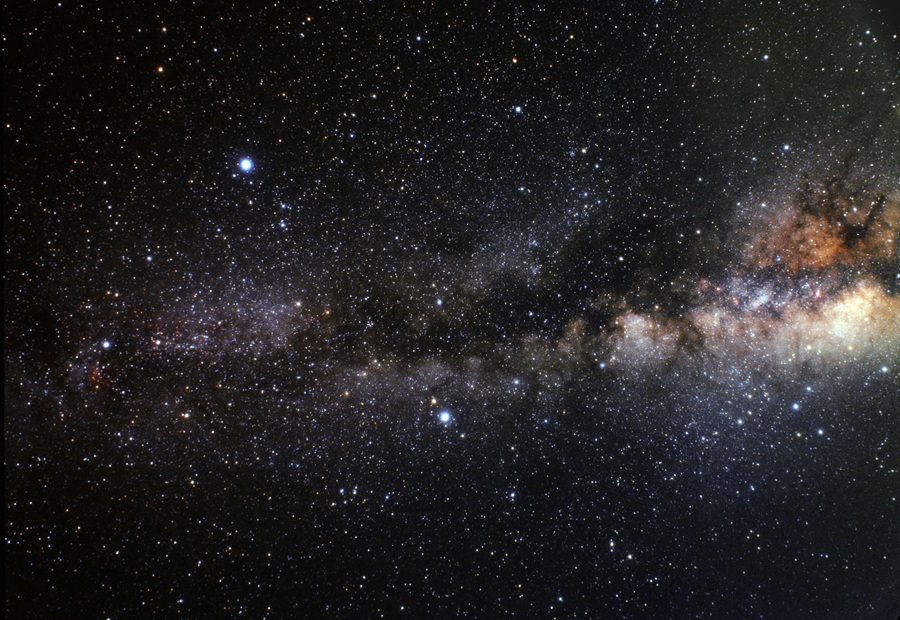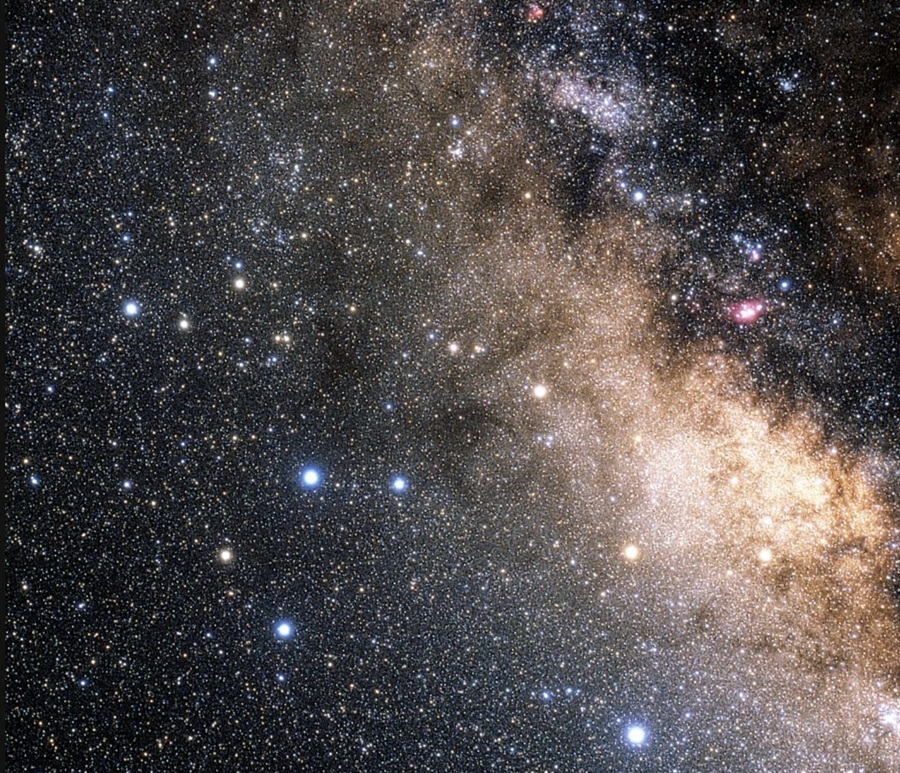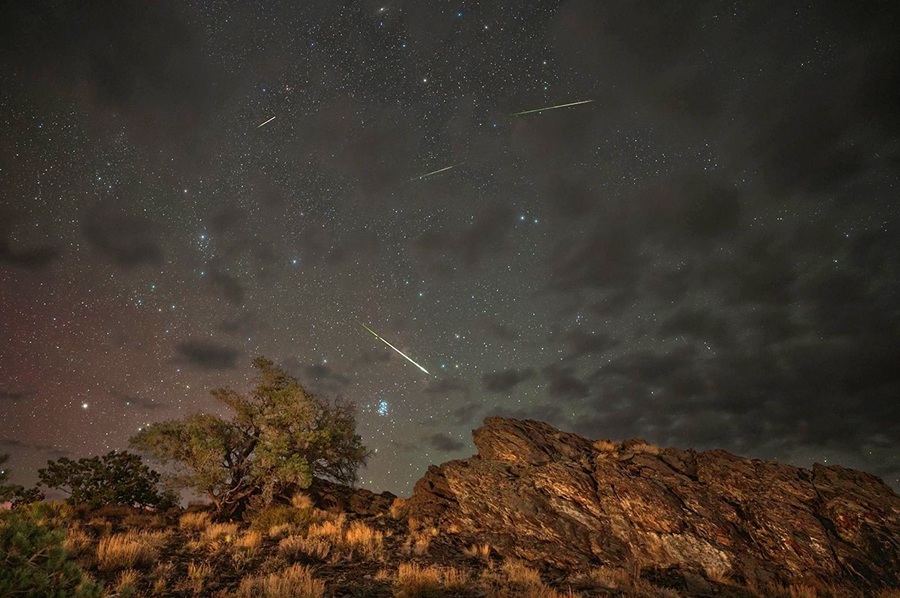Summer is a great time of year for stargazing. On even the hottest days, the temperature drops after sunset, and often a cooling breeze picks up near the bay and ocean beaches. And there are always fun things to see in July and August.
Every night, the Summer Triangle glitters overhead, composed of the three bright stars Vega, Altair, and Deneb. They reside in three different constellations (Lyra, Altair, and Cygnus, respectively) but taken together form an asterism: a group of stars that aren’t part of an official constellation but which still have a recognizable shape. The Big Dipper is actually an asterism, not a constellation; it’s part of the larger constellation Ursa Major. Look straight up to find the Summer Triangle. A star map or app can help you identify the three stars.

This is also the best time of year to see two elusive constellations, Sagittarius and Scorpius. They’re only visible low in the south and west, and most of the year they can be seen only at inconvenient hours. But right now, you can easily see them after dark. You’ll need a location with a clear view down to the southern horizon; an Outer Cape bay beach is perfect.
Scorpius, the scorpion, is the easier of the two to identify. Look very low and due south right after nightfall. You’re looking for a sinuous line of stars that curls back over itself; the curl is the scorpion’s stinger. The bright red star Antares marks its head. Take a moment to note the deep red color of Antares in contrast to blue-white Vega overhead in the Summer Triangle. Look to the right and a little above Antares for orange Arcturus, another bright star of summer. Star colors are subtle, but on a clear night they reveal themselves to dark-adapted eyes.
Sagittarius the archer is immediately left of Scorpius as you face south. The archer is depicted as a centaur with a bow and nocked arrow, but its form is not obvious. Confession: after decades of observing, I still don’t see anything that resembles a centaur with bow and arrow.

There is an easy asterism in Sagittarius known as the Teapot. The spout of the pot is left of and parallel to Scorpius’s stinger; its base is toward the horizon, and the lid oriented up. Looking at this asterism gets even better: the Milky Way is visible in the dark skies of the Outer Cape, and its ghostly form extends right past the Teapot’s spout, as if poured from it in some enormous galactic tea ceremony.
The sight of two planets rewards early risers this summer. If you’re up before sunrise, turn your gaze to the east. You’ll see a very bright blue-white star rising ahead of the sun. That’s the planet Venus, currently in its role of Morning Star. It is also, at other times and depending on the interplay of the orbits of Earth and Venus, the Evening Star. Look above Venus and to the right. You’ll see a red-gold star brighter than any surrounding stars (though not as bright as Venus). That’s the planet Saturn.
The Summer Triangle, Sagittarius, Scorpius, Venus, and Saturn are with us all summer. There’s also a more time-limited event coming up in late July through early August: the annual Perseid meteor shower.

Every summer, Earth’s orbit passes through the debris stream of comet Swift-Tuttle. It’s a trail of tiny rocks the size of sand grains left behind as the comet’s ice melted during its close approach around the Sun. Swift-Tuttle passes through the inner solar system once every 133 years and was last here in 1992. But over many orbits it has left behind a mess in space. Some years, we pass through a dense debris stream, giving us a spectacular show of shooting stars as comet debris vaporizes in the upper atmosphere. Other years, we plow through a less dense stream, or skim the edges of one, yielding humbler Perseids.
The Perseids will begin appearing in late July, and the peak is expected on the night of Aug. 11 to 12, when there could be up to 100 meteors per hour. Unfortunately, that night a bright Moon will obscure many fainter meteors, especially at the best observing time before dawn. But you still should see some brighter shooting stars. And you don’t have to wait for dawn. Head outside any time after dark and look up in any direction. You might have to wait a few minutes, but sooner or later you’ll see one. If you’re lucky, you may see an exploding fireball, for which the Perseids are famous. These are especially large pieces of debris exploding as they strike our atmosphere at 36 miles per second (they’re still quite small — at most a few feet wide).
Shooting stars occur every night from other random space debris. You can tell if it’s a Perseid if the radiant, that is, the line in the sky traced by the meteor, originates from the direction of the constellation Perseus. That’s why they’re called Perseids. Perseus is below the northern horizon until late, but your handy star map or app will point you toward him. Enjoy these summer nights. Clear skies!



